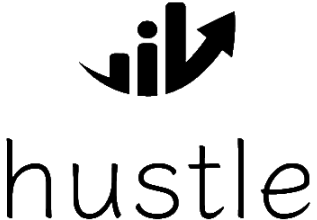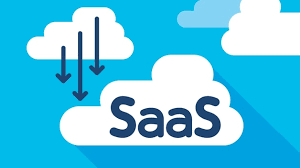In an era where digital solutions are paramount, Software-as-a-Service (SaaS) has emerged as a revolutionary model that is reshaping how software is consumed and monetized. This article delves into the essence of SaaS, its financial framework, and the strategies for developing and monetizing SaaS products, ultimately guiding entrepreneurs on the journey to potentially making millions through this innovative business model.
Key Takeaways
- SaaS, or Software-as-a-Service, is a subscription-based software delivery model that allows users to access applications hosted on a cloud platform without the need for local installation.
- The popularity of SaaS is due to its numerous benefits, including lower upfront costs, scalability, and accessibility from any device with an internet connection.
- Financial success in SaaS comes from recurring revenue streams, multiple income channels, and a cost structure that favors high profit margins.
- Building a successful SaaS product involves identifying market demand, creating a minimal viable product (MVP), and continuously iterating based on user feedback.
- Entrepreneurs can achieve significant wealth through SaaS by focusing on customer acquisition, retention, smart pricing strategies, and scaling the business effectively.
Understanding Software-as-a-Service (SaaS)

Defining SaaS and Its Popularity
Software-as-a-Service, or SaaS, represents a paradigm shift in how software is delivered and utilized. It is a cloud-based method where applications are accessed via a subscription, rather than being purchased and installed on individual devices. This model has surged in popularity due to its numerous advantages for both developers and users. Since 2016, there has been a significant uptick in SaaS adoption, with a 33% increase in companies using more SaaS applications.
SaaS is not just a single category of cloud computing but is part of a broader ecosystem that includes Infrastructure-as-a-Service (IaaS) and Platform-as-a-Service (PaaS). Unlike its counterparts, SaaS is unique in its widespread appeal to both business-to-business (B2B) and business-to-consumer (B2C) markets, offering a diverse range of products from personal entertainment to sophisticated IT tools.
The ease of access is a defining feature of SaaS; users can operate the software from nearly any device with an internet connection, including laptops, tablets, and mobile phones. This accessibility is a cornerstone of the SaaS model, which is intrinsically linked to the power of cloud computing and is essential for any company considering its growth strategy.
The Shift to Subscription-Based Software Models
The software industry’s transition to subscription-based models represents a fundamental change in how products are delivered and monetized. Customers now pay a recurring fee, typically on a monthly or annual basis, to access software applications. This shift has been driven by the convenience and scalability that SaaS offers both providers and users.
The subscription model has several advantages for SaaS companies:
- Predictable revenue streams
- Easier customer acquisition and retention
- Continuous engagement and upselling opportunities
In the subscription model, businesses benefit from a steady income flow, allowing for better financial planning and investment in product development.
Hybrid pricing strategies have emerged, blending traditional subscription fees with usage-based components, catering to diverse customer needs. For instance, a user might pay a base monthly fee plus additional costs tied to their level of usage. This flexibility has become a hallmark of modern SaaS offerings, ensuring that customers only pay for what they truly need.
Key Characteristics of SaaS Companies
Software-as-a-Service (SaaS) companies are distinguished by several defining characteristics that set them apart from traditional software providers. Accessibility and persistence are at the core of the SaaS model, allowing users to access applications from any internet-enabled device and location. This convenience is a cornerstone of the SaaS value proposition.
Another hallmark of SaaS companies is their ability to offer customizable solutions that can seamlessly integrate with other business applications. This flexibility is crucial for clients who require tailored functionalities to suit their unique business processes.
SaaS companies thrive on their ability to scale services to meet customer demand. Scalable usage and automatic updates are essential features that ensure clients receive the most current and efficient service without taxing their own IT resources.
The financial success of SaaS companies often hinges on their innovative approach to software delivery, leveraging the power of cloud computing to offer a subscription-based model that provides a steady stream of revenue and a compelling customer value proposition.
The Financial Anatomy of SaaS Businesses

Recurring Revenue Streams
At the heart of the SaaS business model lies the concept of recurring revenue streams, a financial engine that powers the sustainability and growth of these companies. Unlike traditional software sales, where revenue is generated from one-time purchases, SaaS companies rely on monthly or yearly subscriptions to ensure a steady cash flow.
- Monthly Recurring Revenue (MRR)
- Yearly Recurring Revenue (YRR)
The beauty of recurring revenue is that it transforms sporadic income into a predictable and stable financial foundation. This predictability allows SaaS businesses to plan and invest with greater confidence, ultimately leading to a more robust and scalable operation.
For instance, a customer may opt for a monthly subscription at a lower cost initially, with the potential to upgrade to an annual plan as their satisfaction and trust in the product grow. This flexibility in payment intervals caters to a diverse customer base and enhances the potential for long-term customer relationships.
Multiple Income Channels
Diversifying income streams is a cornerstone of financial stability for SaaS businesses. Affiliate revenue models and channel sales are two strategies that can complement direct sales efforts. By integrating affiliate links, SaaS companies can earn commissions from directing users to third-party services. Channel sales involve partnering with resellers who have established audiences, thereby extending market reach without direct selling.
- Direct Distribution: Sales through company assets like websites and sales teams.
- Indirect Distribution: Sales via third parties such as app stores, resellers, and service firms.
Creating multiple versions of a product to cater to different customer segments can also generate additional revenue streams. This approach not only broadens the market appeal but also allows for the customization of features to meet specific needs.
By strategically leveraging various income channels, SaaS companies can build a robust revenue model that maximizes profitability and reduces reliance on a single source of income.
Cost Structure and Profit Margins
The cost structure of a SaaS business is pivotal in determining its profitability and scalability. Unlike traditional software companies, SaaS providers benefit from lower upfront costs due to the cloud-based nature of their services. However, they must manage ongoing expenses such as server costs, development, support, and marketing. Economies of scale play a crucial role as hosting multiple products in the same environment can significantly reduce costs.
The key to a successful SaaS business lies in balancing the cost of delivering the service with the pricing strategy to ensure healthy profit margins.
Understanding the gross margin is essential for evaluating the financial health of a SaaS company. It is calculated by subtracting the direct expenses from the revenue generated. Here’s a simplified breakdown of typical SaaS costs:
- Business Analysis and Design
- Development and Support
- Monitoring Software
- Server Costs
- Marketing
Each category must be carefully monitored to avoid ‘KPI overload,’ which can hinder growth. The goal is to maintain a SaaS gross margin that allows for competitive pricing while ensuring profitability.
Strategies for SaaS Product Development

Identifying Market Demand and Creating a Hypothesis
To ensure the success of a SaaS product, it’s crucial to identify and understand the market demand. This involves a meticulous process of researching and validating the hypothesis that there is a genuine need for the product. Here are the steps to guide you through this phase:
- Understand the pain points of potential customers, not just your own assumptions.
- Validate your hypothesis by investigating if there is an actual market need.
- Utilize platforms like Quora and IndieHackers to gather ideas and gauge interest.
- Conduct thorough research using tools like Google Trends and social media.
- Create a funnel strategy to convert interest into business success.
Remember, the goal is to gain comprehensive knowledge of your target market. This includes understanding who your customers are, their challenges, and the existing solutions they might be using. It’s about learning the cost to them in terms of time, hassle, money, or resources.
Creating early market buzz through targeted advertisements and social media can help validate your product with the user base. Link these to a landing page with an opt-in to further engage potential users. This stage is not just about proving your hypothesis but also avoiding the waste of time and money on a product with no proven demand.
Developing a Minimal Viable Product (MVP)
The journey to a successful SaaS product begins with the creation of a Minimal Viable Product (MVP). This initial version should encapsulate the core functionality that solves the primary problem for your target audience. It’s not about perfection; it’s about validating your idea with the least amount of effort and expense.
The MVP is your proving ground, where you test hypotheses and gather user feedback to refine your product. It’s a cycle of build, measure, and learn, aimed at achieving product-market fit as efficiently as possible.
Here are some steps to consider when developing your MVP:
- Identify the essential features that address the key challenges of your target users.
- Develop a basic, functional version of your product that can be brought to market quickly.
- Engage with early adopters and collect feedback to iterate on your product.
- Focus on building a scalable solution that can grow with customer demand.
Remember, the MVP is just the beginning. It’s a foundation upon which you will continuously build and improve, guided by real-world usage and customer insights.
Iterative Product Development and Feature Expansion
The journey from a Minimum Viable Product (MVP) to a full-fledged SaaS offering is marked by continuous iteration and feature expansion. This process is crucial for adapting to user feedback and evolving market demands. By consistently refining the product, SaaS developers can enhance the user experience and address pain points, which in turn can lead to increased customer satisfaction and retention.
- Gather user feedback on the MVP
- Analyze data and identify trends
- Prioritize feature development based on user needs
- Release updates and new features regularly
Embrace the iterative process as a means to fine-tune your SaaS product, ensuring that each update brings it closer to the ideal solution for your target market.
The iterative approach ensures that your product evolves in response to user needs and market trends, enhancing its value proposition over time. Investing in this process can be the difference between a product that stagnates and one that thrives, potentially leading to significant financial success.
Monetizing Your SaaS Product
Customer Acquisition and Retention
In the realm of SaaS, customer retention is pivotal. It’s a well-known fact that retaining an existing customer is far less resource-intensive than acquiring a new one. A strong retention strategy can lead to a self-perpetuating cycle of growth, as satisfied customers not only continue their subscriptions but also become advocates for the service, potentially attracting new users.
To effectively manage customer acquisition and retention, it’s essential to understand the associated costs and metrics. Here’s a brief overview:
- Customer Acquisition Cost (CAC): The investment required to gain a new customer, encompassing all sales and marketing expenses.
- Monthly Recurring Revenue (MRR) / Annual Recurring Revenue (ARR): These metrics forecast the expected revenue on a monthly or yearly basis, providing insight into financial health and growth potential.
- Retention Rate: A measure of a company’s ability to keep its customers over time, which is crucial for sustainable growth.
By meticulously monitoring these metrics, businesses can fine-tune their strategies to optimize both acquisition and retention, ensuring a robust foundation for scaling up.
It’s also important to note that while high customer retention is indicative of a strong business model, it doesn’t automatically translate to revenue retention. Companies must remain vigilant, continuously enhancing their offerings and customer service to maintain a competitive edge.
Pricing Models and Subscription Tiers
The art of pricing a SaaS product is pivotal to its financial success. Choosing the right pricing model is a strategic decision that can significantly impact customer acquisition and revenue growth. There are several models to consider, each with its own advantages:
- Flat-rate pricing: A single price for all features, simple and transparent.
- Usage-based pricing: Customers pay according to their usage levels.
- Per-user pricing: Charges are based on the number of users.
- Tiered pricing: Different plans with varying features and prices.
Tiered pricing, in particular, is the de facto model used by most companies. It allows for flexibility and scalability, catering to different customer segments. For instance:
| Tier | Features | Price |
|---|---|---|
| Basic | Essential | $10/mo |
| Professional | Advanced | $50/mo |
| Enterprise | Comprehensive | $100/mo |
It’s essential to align your pricing tiers with the perceived value your customers will gain from each level. This ensures that customers feel they are getting a fair deal, which is crucial for long-term retention.
Hybrid models are also becoming more common, combining elements like a monthly subscription fee with usage-based components. This flexibility can accommodate the diverse needs of a broad customer base, making it a compelling option for SaaS businesses.
Scaling Your SaaS Business for Maximum Profit
Scaling a SaaS business effectively requires a strategic approach to ensure that growth is both sustainable and profitable. Optimizing pricing strategies is crucial, as it can significantly impact the rate at which your business expands. It’s not just about increasing prices, but finding the right balance that offers value to your customers while maximizing your revenue.
To scale successfully, you must invest in various aspects of your business. This includes enhancing your product with new features, providing exceptional customer support, and employing data analytics for informed decision-making. Each of these areas requires capital, and without it, scaling efforts may falter.
Here are some key considerations for scaling your SaaS business:
- Regularly review and adjust your pricing models to align with customer value and market demand.
- Ensure your product development team is agile and responsive to user feedback for continuous improvement.
- Build a robust customer support system to maintain high satisfaction and retention rates.
- Develop a strong marketing strategy to guide potential customers through the sales funnel effectively.
Remember, scaling is not just about growing your customer base, but also about enhancing the value of your SaaS product to each user. By focusing on these areas and continuously seeking ways to improve, you can set your SaaS business on a path to achieving maximum profit and realizing the millionaire dream.
Realizing the Millionaire Dream with SaaS

Success Stories and Case Studies
The journey from a startup to a SaaS titan is paved with challenges and milestones. Success stories of companies like Salesforce, Zoom, and Slack are not just inspiring but also provide a blueprint for aspiring SaaS entrepreneurs. These companies have demonstrated the potential of SaaS to disrupt industries and achieve remarkable growth.
- Salesforce revolutionized CRM and continues to dominate the market.
- Zoom became an essential tool for communication during the pandemic.
- HubSpot has been pivotal in inbound marketing, offering a suite of tools for businesses.
- Zapier’s automation capabilities connect disparate apps, enhancing productivity.
- Slack’s messaging platform has transformed workplace communication.
The key to their exceptional success lies in a deep understanding of market needs, relentless innovation, and an unwavering commitment to customer satisfaction.
Each of these companies started with a unique vision and a focus on solving specific problems. Their growth trajectories emphasize the importance of scalability and adaptability in the SaaS industry.
The Potential for High Valuation and Exit Strategies
The allure of SaaS businesses lies not only in their operational models but also in their potential for high valuations. Investors and acquirers are often willing to pay premiums for companies with strong, predictable cash flows and a scalable customer base. A successful exit strategy can result in a substantial financial windfall for SaaS founders.
The right exit strategy can transform a SaaS business into a multi-million dollar deal, setting the stage for founders to realize their entrepreneurial dreams.
Valuation of a SaaS company is a complex process, influenced by a variety of factors including monthly recurring revenue (MRR), growth rate, customer acquisition costs (CAC), and customer lifetime value (CLV). Here’s a simplified breakdown of key metrics that can impact valuation:
- MRR: A measure of predictable revenue stream.
- Growth Rate: Indicates the company’s expansion speed.
- CAC: The investment required to acquire a new customer.
- CLV: The total value a customer is expected to bring over their lifetime.
Understanding these metrics and optimizing them can lead to a lucrative exit. It’s essential to avoid common pitfalls such as underestimating the importance of customer retention or overlooking the competitive landscape.
Long-Term Growth and Sustainability in SaaS
Achieving long-term growth and sustainability in the SaaS industry requires a strategic approach that balances innovation with financial health. The primary goal of a SaaS company is to create powerful, robust and recurring payments that come in every month, ensuring a steady revenue stream. However, this goal must be tempered with the reality of customer churn and the need for continuous investment in development and marketing.
The SaaS business model is unique and still evolving, closely linked to the advancements in cloud computing. Understanding this model is crucial for planning your company’s growth trajectory.
To maintain sustainability, SaaS companies should regularly revisit their pricing strategies, even when the business appears profitable. Mature SaaS companies, in particular, may find untapped revenue potential by optimizing their price points. Additionally, adhering to proven SaaS growth strategies can propel a business forward:
- Focus on customer acquisition
- Scale sales and marketing efforts
- Develop a comprehensive pricing strategy
- Invest in SEO and content marketing
By following these strategies and staying vigilant about the company’s financial and operational metrics, SaaS businesses can aim for not just survival, but thriving success in the long run.
Conclusion
In conclusion, SaaS represents a lucrative opportunity for entrepreneurs aiming to tap into the digital economy’s potential. By understanding the SaaS model, identifying a market need, and developing a product that delivers value, you can establish a business with recurring revenue streams and the potential for significant financial returns. Remember, creating a successful SaaS product is a marathon, not a sprint, requiring market knowledge, strategic planning, and continuous improvement. With dedication and the right approach, your SaaS venture could indeed be your ticket to becoming a millionaire.
Frequently Asked Questions
What is Software-as-a-Service (SaaS)?
SaaS, or software as a service, is a delivery model in which software is licensed to customers via a subscription plan and is centrally hosted, often in the cloud. Users can access the software online without the need to install it on individual computers.
Why has SaaS become so popular?
SaaS has gained popularity due to its convenience, scalability, and cost-effectiveness. It allows companies to use software on a subscription basis, reducing the need for significant upfront investments and maintenance costs. The model also facilitates remote access and real-time collaboration.
What are the key characteristics of successful SaaS companies?
Successful SaaS companies typically offer valuable, user-friendly products, have a recurring revenue stream, and demonstrate the ability to scale. They also focus on customer acquisition, retention, and providing multiple versions of their products to cater to different market segments.
How do SaaS businesses generate revenue?
SaaS businesses generate revenue primarily through subscription models, offering various tiers of service at different price points. They often have multiple income streams, including different types of users or service variations, such as personal or commercial versions.
What is a Minimal Viable Product (MVP) in the context of SaaS?
An MVP in the SaaS context is the simplest version of the product that can be released to test a hypothesis about market demand. It contains only the core features necessary to satisfy early adopters and to validate the product’s value proposition.
Can developing a SaaS product really make you a millionaire?
Yes, developing a SaaS product has the potential to make you a millionaire, provided the product meets market demand, solves a significant problem, and you can successfully acquire and retain customers. The recurring revenue model and scalability of SaaS can lead to substantial financial success.
you can also read our latest articles on You Can Make 10K$ Per Month Easily? | What Is The Latest Technology In The World Right Now? | What Is SAAS And How You Can Make Money Through It








Can you be more specific about the content of your article? After reading it, I still have some doubts. Hope you can help me.
Your point of view caught my eye and was very interesting. Thanks. I have a question for you.
I don’t think the title of your article matches the content lol. Just kidding, mainly because I had some doubts after reading the article.
Thanks for sharing. I read many of your blog posts, cool, your blog is very good.